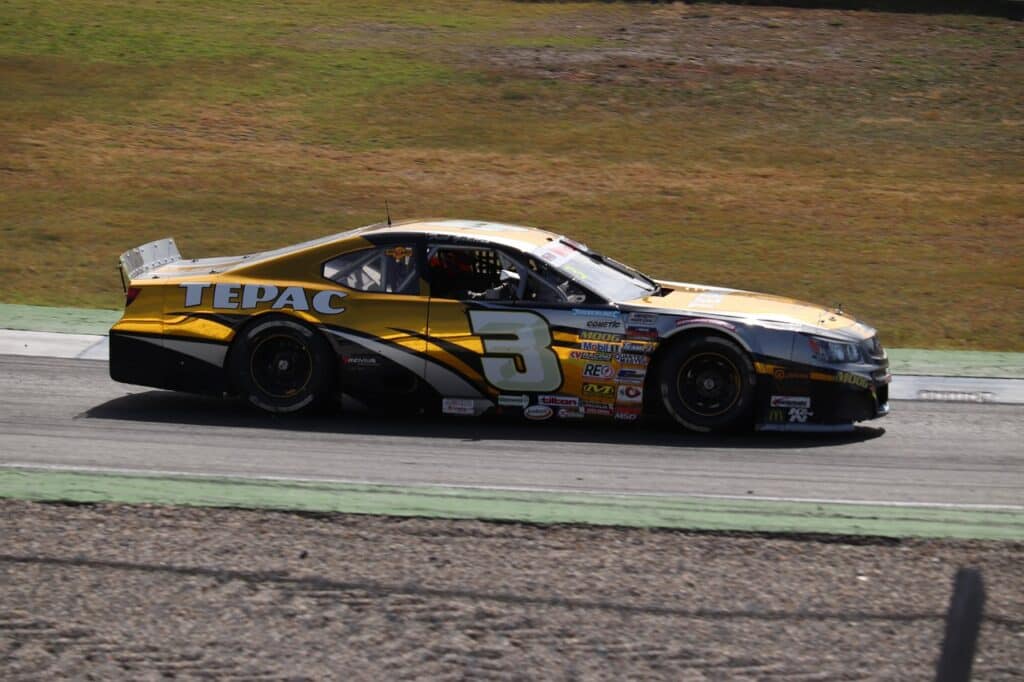No products in the cart.
Fun Facts
NASCAR Makes a Right Turn: The Thrill of Road Course Racing
 NASCAR Makes a Right Turn: The Thrill of Road Course Racing
NASCAR Makes a Right Turn: The Thrill of Road Course Racing
For decades, the roar of stock car engines and the smell of burnt rubber have been synonymous with oval tracks in NASCAR. Imagine then, the surprise (and maybe a little skepticism) when NASCAR began incorporating road courses – circuits with twists, turns, and elevation changes – into the racing schedule. While these tracks may seem like an odd fit for the traditionally oval-focused sport, road course racing in NASCAR has become a fan favorite, injecting a thrilling dose of variety and unexpected challenges into the season.
A World Away from the Oval:
The core difference between traditional NASCAR tracks and road courses lies in their layout. Oval tracks are, well, ovals – closed circuits with banked turns that allow drivers to maintain high speeds throughout the race. Road courses, on the other hand, are more like miniature versions of Formula One tracks. They are typically longer and weave through the landscape, featuring sharp turns, elevation changes, and straightaways that demand a different skillset from drivers.
Why the Switch?
So, why did NASCAR, a sport steeped in oval track tradition, embrace road course racing? Here are a few reasons:
-
Reaching a Wider Audience: NASCAR, like any sport, is always looking for ways to expand its fanbase. Road course racing offers a different kind of excitement, appealing to fans of sports car racing and those who crave a more technical style of competition.
-
A Driver’s Challenge: Road courses push drivers to their limits. Unlike the high-speed, drafting-heavy nature of oval racing, road courses demand precision, quick reflexes, and the ability to adapt to changing track conditions. This technical aspect adds a new layer of strategy and unpredictability to the races.
-
Keeping Things Fresh: Let’s face it, watching cars zoom around an oval for hundreds of laps can get repetitive. Road courses inject a dose of excitement with their varied layouts and constant challenges. This keeps things interesting for both fans and drivers alike.
The Rise of the “Road Course Ringer”
The introduction of road courses has also given rise to a new breed of NASCAR driver – the “road course ringer.” These are drivers who may not be top contenders on traditional ovals but excel on the technical challenges of road courses. Their expertise in braking zones, cornering techniques, and managing tire wear adds another layer of intrigue to the competition.
Iconic Road Courses on the NASCAR Schedule
Several road courses have become staples on the NASCAR Cup Series schedule, each offering unique challenges and historical significance:
-
Sonoma Raceway (California): Nicknamed “The Road to Nowhere” due to its remote location, Sonoma offers a fast and technical layout with a mix of high-speed turns and tight chicanes.
-
Watkins Glen International (New York): This historic track, nestled amidst rolling hills, features dramatic elevation changes and a tight “boot” section that demands skillful maneuvering.
-
Circuit of the Americas (Texas): A true Formula One-style circuit, COTA is a long and demanding track with a mix of fast straightaways, technical corners, and a challenging elevation change.
-
Charlotte Roval (North Carolina): This unique hybrid track incorporates a portion of Charlotte Motor Speedway’s oval with an infield road course layout, offering a blend of high speeds and technical challenges.
The Future of Road Course Racing in NASCAR
The success of road course racing in NASCAR has solidified its place in the sport. Fans and drivers alike embrace the variety and challenge these tracks offer. As NASCAR continues to evolve, expect to see even more road courses added to the schedule, bringing with them a new wave of excitement and competition to the sport.
Beyond the Wins: The Unexpected Benefits of Road Course Racing
The impact of road course racing extends beyond thrilling races and driver rivalries. Here are some additional benefits:
-
Testing the Limits of Technology: Road courses push the limits of car technology, requiring teams to adapt their setups for increased downforce, sharper handling, and better tire wear management. This constant innovation benefits the overall development of stock car technology.
-
A Global Appeal: Road courses are a familiar sight in international motorsport. As NASCAR incorporates more road courses, it opens doors to potential partnerships and collaborations with other racing series, giving the sport a more global appeal.



